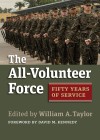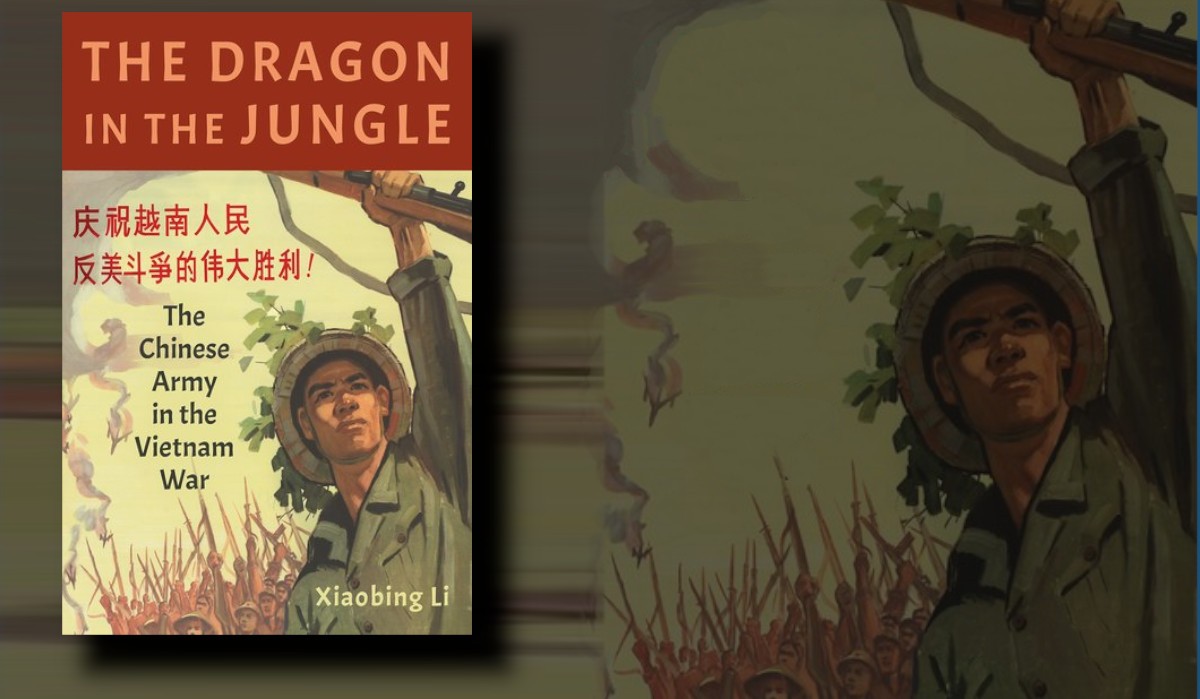Fifty Years of Service
Edited by William A Taylor
University Press of Kansas, 2023, 344 pp
Hardcover ISBN 9780700635382
Paperback ISBN 9780700634811
eBook ISBN 9780700634828
Reviewed by Brian Washam
1968 was a tumultuous year for the United States as the unpopular Vietnam War reached a crescendo with North Vietnam launching the Tet Offensive. Though a military victory for American and South Vietnamese forces, the American public watched the offensive play out live on the news. They concluded that the United States' strategic goals in Vietnam had failed and that they had been lied to by their political leaders. For many Americans, the most contentious issue surrounding the war was the draft. Certain men could get deferments from the draft, leaving their spot to be filled by those without the connections or wealth to obtain these deferments. Future President Richard Nixon recognised the unpopularity of the draft and, along with promising to end the Vietnam War, ran his campaign based on the promise that he would end conscription and transition America’s military into an All-Volunteer Force (AVF).
For the last fifty years, the United States has had a military solely composed of volunteers. The transition to the AVF has impacted the way the United States fights wars and its society. These impacts are what the contributing authors have attempted to contextualise and analyse in The All-Volunteer Force: Fifty Years of Service. As the AVF crossed its fiftieth year in 2023, this work provides an invaluable look back at the AVF’s inception, the challenges it faced before its implementation, and what the future might hold for the AVF. At its core, the book argues that the AVF represents the most significant development in modern American military history.[1] It is hard to contend against this assertion as the authors skillfully and convincingly make this point clear throughout the book's thirteen chapters. These chapters are divided into four parts, each tackling a specific aspect of the AVF and its effect on American society. By the end of the book, the reader is left with many important issues to consider, chief among them being the AVFs widening of the military-civilian gap, the viability and efficiency of the AVF, and the breakdown of democratic values and institutions that have plagued the United States since the advent of the AVF.
The authors assembled to contribute to this study are impressive. Taylor has brought together a group of authors with diverse backgrounds ranging from economists, political scientists, military professionals, and historians, each adding their unique perspective and expertise to the topic. Starting in part one, authors Amy J. Rutenberg, Michael Gibbs, Timothy J. Perri, William A. Taylor, and Beth Bailey provide the historical context leading up to the inception of the AVF. In his chapter, Taylor excellently illustrates how Nixon used the end of the draft as a political tool to get elected and set the agenda for the Gates Commission. In 1970, Nixon formed the Gates Commission, named after its chair former Secretary of Defense Thomas S. Gates Jr, to develop a comprehensive plan to end the draft and move towards an all-volunteer force. From its outset, Nixon employed a heavy hand in working with the Gates Commission, ensuring that whatever potential problems the group may find in the AVF, they would unanimously agree that the best step forward for the United States military would be to end the draft and transition to a volunteer force.[2] The Gates Commission would prove itself to be prescient as it listed the possible challenges the AVF would face, the most important of these being the widening of the military-civilian gap, the makeup of the AVF being unrepresentative of American society, and the AVF being a threat to the American democratic way of life.[3]
Part two looks at the results of the transition to the AVF. Authors Kara Dixon Vuic, Jennifer Mittlestadt, and Titus Firmin examine how the United States military has opened up more positions and opportunities for women to serve through the AVF and what the socioeconomic makeup of the military looks like today. In his chapter, Firmin brings to light that instead of being made up of the economically disadvantaged, the AVF mainly comprises members from the middle class. The reason for this is that as the military utilises advanced technology and weapons, it requires a higher quality of recruits. Entrance qualifications for the military have risen as a result, and recruiters target people with a high school degree and some college experience.[4] In the end, this creates a fighting force that is unrepresentative of the United States.
In part three, authors Major General Dennis Laich, Major General Jeffrey E. Phillips, and Lawrence B. Wilkerson, examines the shortcomings of the AVF and demands a reassessment of the problems it faces. Among these challenges of the AVF are viability, its efficiency going forward, and its overreliance on using reserve units in times of conflict. Since its inception, the AVF has necessitated that the reserves and the National Guard shift from a strategic reserve to an operational one that deploys as needed in any part of the world. The reliance on the reserves has led to a significant reduction in dwell-time for soldiers and the use of ‘stop-loss’ to stop soldiers from leaving the military. These actions by the military have led to an increase in PTSD, increased drug and alcohol abuse, and increased rates of suicide among soldiers.[5]
The final part is arguably the most critical section of the book. Authors Adrian R. Lewis, Mark F. Cancian, and Marybeth P. Ulrich offer sobering scenarios if the problems of the AVF are not fixed. The direst of these chapters is from Lewis, who argues that the United States is no longer a nation linked together by like-minded people but rather a State of individual and self-serving nations. He points to the AVF as the cause of this fracturing and the glue that holds a democratic nation together is no longer apparent in America. The glue is the shared obligation of citizens to serve their nation in times of crisis. Because the United States has a military based on volunteers, military service is no longer an obligation but a choice.[6]
The All-Volunteer Force is an excellently crafted and well-needed work. The authors intended for this book to be a resource for not only historians and students of American military history but also for journalists, policymakers, and the general reader. This book raises many important issues surrounding the AVF that all American citizens must contend with if America wishes to be a world power in the future. However, these issues are not unique to the AVF. Other countries that rely on volunteers to fill their military ranks would do well to read this book. For example, Australia's army is an all-volunteer force and faces many of the same problems that the AVF faces. The Australian Defence Force (ADF) is facing a recruitment and retention crisis. With any volunteer force, attracting recruits from the private sector will always be one of its most significant problems. The ADF has recognised this problem and has attempted to level the playing field between military and civilian careers by offering incentives and competitive salaries. However, the option to have a career in the civilian world with incentives and a salary comparable to what the ADF offers will always be available to potential recruits. What can tip the balance for someone to choose a career in the civilian sector over the military is their apprehension to enter a world they know little about.
For societies with an all-volunteer force, the military is distant and foreign world for most civilians. A gap is created between these two worlds due to civilians being disconnected from the military. The civilian-military gap is one of the most pressing issues facing any volunteer force as it nurtures a belief that military service is not an obligation inherent with citizenship. Most Americans have grown up in a country where the role of fighting wars is left to those who choose the military as a career. As many of the authors of this book have pointed out, this has led to a widening of the military-civilian divide.
Like the United States, Australia stopped using drafted soldiers to fight their conflicts after the Vietnam War. With the end of the draft and the move to an all-volunteer force in America and Australia, the defence of these nations was left to those who chose the military as a career and was no longer seen as an obligation inherent in citizenship by the people. I am not saying that either country should bring back the draft, but closing the gap between the military and civilian society is crucial to fixing the problems facing the United States and Australia regarding recruitment and retention. Books like The All-Volunteer Force are an excellent first step in addressing the problems of the AVF and educating the public on the issues the American military faces. Australian audiences can only benefit from reading this book and following its example by critically looking at its volunteer force, recognising the problems within it, and educating the public about these problems.
Endnotes
[1] David M. Kennedy, ed., The All-Volunteer Force: Fifty Years of Service (Lawrence: University of Kansas Press, 2023), 2.
[2] Kennedy, All-Volunteer Force, 62-63, 72.
[3] Kennedy, All-Volunteer Force, 67.
[4] Kennedy, All-Volunteer Force, 158.
[5] Kennedy, All-Volunteer Force, 171.
[6] Kennedy, All-Volunteer Force, 235.



